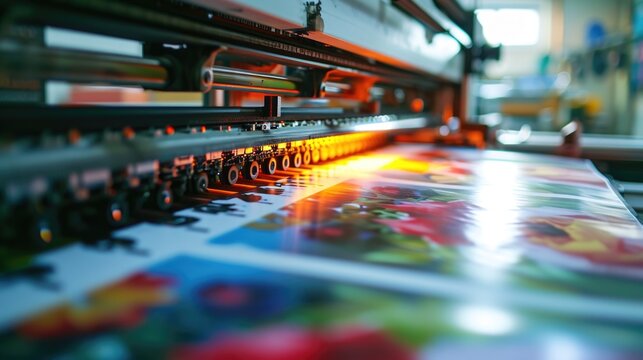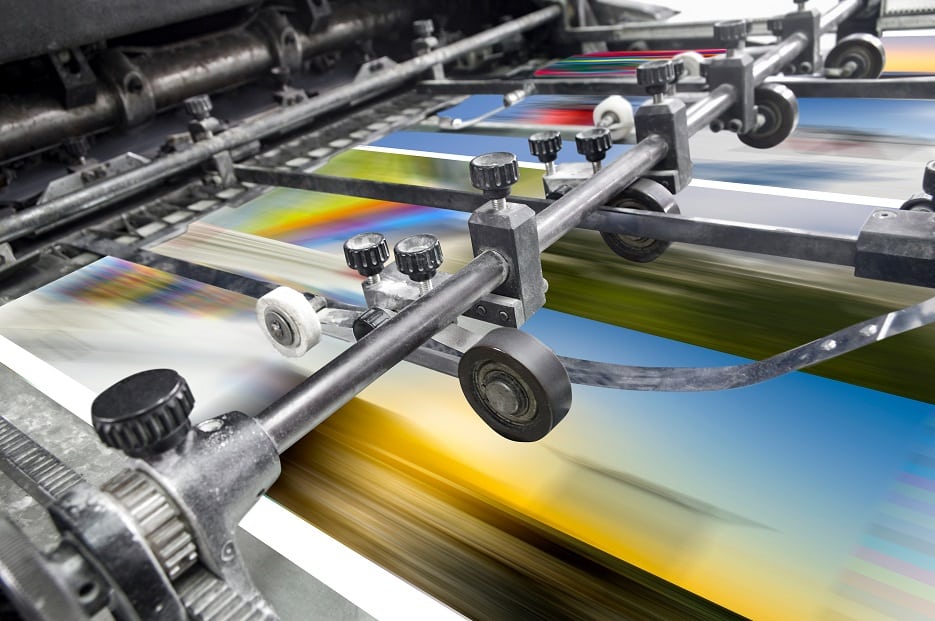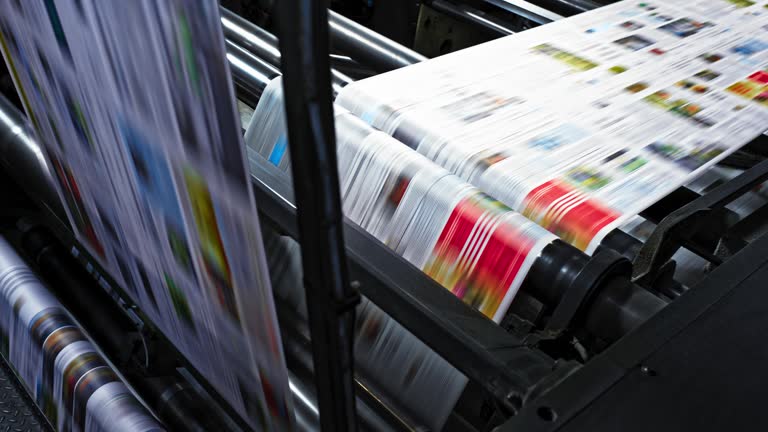The world of printing has always been a fascinating one, with offset printing standing out as a key player. Known for its efficiency and high-quality outputs, it is the preferred choice for many businesses. This article delves into the intricacies of offset printing and explores the fundamental design principles that guide its use.

Understanding Offset Printing
At its core, offset printing is a technique where the inked image is transferred from a plate to a rubber blanket and then to the printing surface. This method is particularly popular due to its capacity to produce consistent, high-quality prints in large quantities.
The History of Offset Printing
The origins of offset printing can be traced back to the early 20th century. Initially developed as an alternative to lithography, it quickly gained traction due to its superior output and efficiency. Over the decades, it has evolved, incorporating modern technologies to enhance its capabilities.
Why Choose Offset Printing?
Businesses often opt for offset printing due to its cost-effectiveness for large print runs. Moreover, it offers precise color reproduction, making it ideal for projects that require a high level of detail, such as theater programs and photography books.
Core Design Principles
For offset printing to be effective, adhering to specific design principles is crucial. These principles ensure that the final product is not only visually appealing but also functional.
Balance and Alignment
One of the fundamental design principles is balance. It ensures that the visual weight of elements is evenly distributed, creating a harmonious composition. Alignment, on the other hand, refers to the arrangement of elements in a way that guides the reader’s eye naturally across the page.
Contrast and Emphasis
Contrast is a powerful tool in design. It highlights differences between elements, drawing attention to specific areas. Emphasis, closely related to contrast, ensures that key information stands out, making it easier for the audience to focus on important details.
Consistency and Repetition
Consistency in design fosters familiarity and understanding. By repeating certain elements, such as colors or fonts, designers create a cohesive look that ties the entire piece together.
The Role of Color in Offset Printing
Color is a pivotal element in both design and offset printing. It evokes emotions, conveys messages, and adds depth to the design. Understanding the color theory is essential for achieving the desired visual impact.
Color Models: CMYK vs. RGB
The CMYK color model is predominantly used in offset printing. It stands for Cyan, Magenta, Yellow, and Key (Black), and is ideal for producing a wide range of colors on paper. In contrast, the RGB model, which stands for Red, Green, and Blue, is used for digital displays.
Choosing the Right Color Palette
Selecting an appropriate color palette is vital in design. It sets the tone for the project and influences the audience’s perception. It’s crucial to choose colors that complement each other and align with the brand’s identity.
Typography in Offset Printing
Typography plays a significant role in design. It not only conveys information but also adds character to the design. In offset printing, choosing the right font can make a difference in readability and aesthetic appeal.
Font Selection
The choice of font should align with the project’s purpose. While serif fonts are often used for formal documents, sans-serif fonts are preferred for modern and minimalist designs.
Hierarchy and Readability
Establishing a hierarchy in typography ensures that the most important information is noticed first. By varying font sizes, weights, and styles, designers can guide the reader’s attention to key points.
Preparing Files for Offset Printing
Before sending files for offset printing, it’s essential to ensure they are print-ready. This involves checking for errors, verifying color settings, and ensuring that all elements are correctly aligned.
File Formats and Resolution
The preferred file formats for offset printing are PDF, EPS, and TIFF. These formats preserve the quality of the design. Additionally, maintaining a high resolution, typically 300 DPI, ensures sharp and clear prints.
Quality Control in Offset Printing
Quality control is integral to offset printing. It involves checking each stage of the printing process to ensure that the final product meets the desired standards.
Proofing and Corrections
Proofing is a crucial step in the printing process. It allows designers to spot errors and make necessary corrections before the final print run, ensuring a flawless output.
Monitoring Print Runs
During the print run, it’s essential to monitor the consistency of colors, alignment, and other elements. This ensures that every copy produced is of the highest quality.
Offset Printing in Different Industries
Offset printing is versatile and is used across various industries. From producing nonprofit materials to product catalogs, its applications are vast and varied.
Publishing and Media
In the publishing industry, offset printing is the go-to method for producing books, magazines, and newspapers. Its ability to produce large volumes efficiently makes it ideal for these applications.
Advertising and Marketing
For marketing materials like brochures, flyers, and posters, offset printing ensures high-quality outputs that capture attention and convey messages effectively.
The Future of Offset Printing
As technology evolves, so does offset printing. Innovations in the field promise to enhance efficiency, reduce costs, and further improve print quality.
Environmental Considerations
With a growing emphasis on sustainability, the printing industry is exploring eco-friendly practices. From using recycled paper to eco-friendly inks, the future of offset printing looks green.
Embracing Digital Integration
While offset printing remains a staple, integrating digital technologies offers new possibilities. Hybrid techniques combining traditional and digital methods are on the rise, offering even more versatility.

FAQs
What is the main advantage of offset printing?
The primary advantage of offset printing is its ability to produce high-quality prints in large volumes cost-effectively.
How does offset printing differ from digital printing?
While offset printing uses plates and is ideal for large runs, digital printing is more suited for smaller quantities and offers quicker turnaround times. For more details, you can refer to this source.
Can offset printing use eco-friendly materials?
Yes, many offset printing setups now use recycled papers and eco-friendly inks to reduce their environmental impact.
In conclusion, offset printing remains a cornerstone of the printing industry. By adhering to essential design principles and embracing new technologies, businesses can continue to produce visually stunning and effective printed materials.
This article contains affiliate links. We may earn a commission at no extra cost to you.







